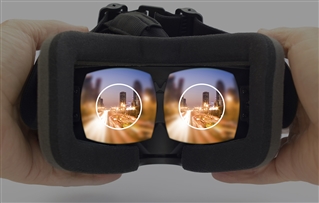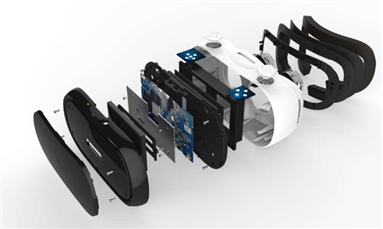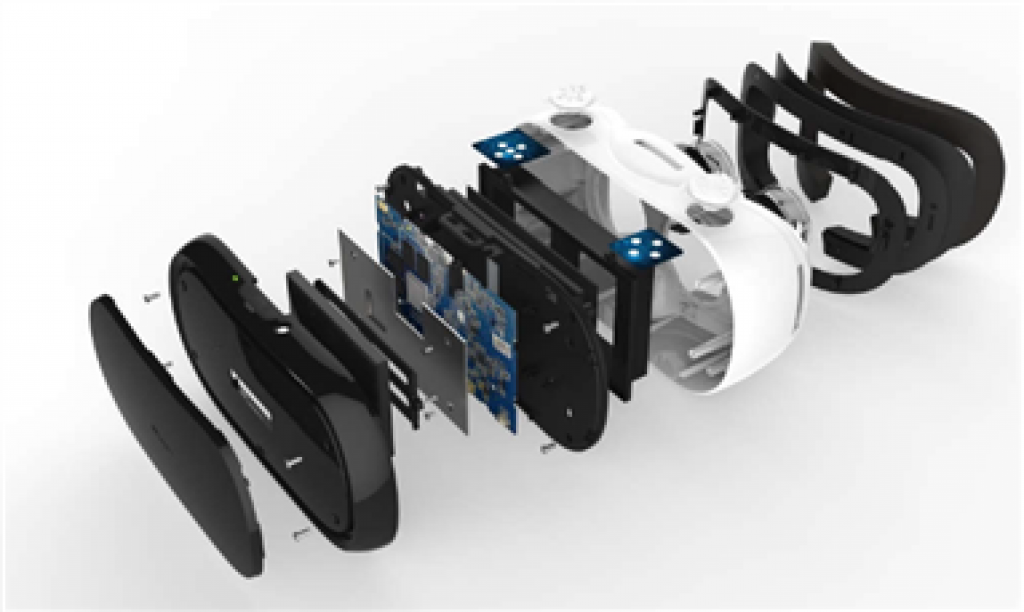This blog post was originally published at ARM's website. It is reprinted here with the permission of ARM.
In 2016 we saw Virtual Reality hit the headlines all over again with a brand new wave of devices, applications and improvements on previous incarnations. With devices now shipping across dozens of manufacturers, price points and levels, it’s time to look at what happens next.
We have of course discussed all the worthy, world changing applications of VR for healthcare, education and so on, and these are beginning to emerge as the technology develops. However, the key compelling use case for this technology is still entertainment. People like to be entertained and we’re all keen to spend money on fun stuff.

What we don’t want to see is the industry losing faith. Whilst devices are everywhere you look, the financial gain is slower to catch up. Like any developing industry no one is keen to spend enormous amount of development time (and therefore budget) on something they’re not sure is going to make it big. As Bob Berry explained regarding the closure of his desktop VR company, Envelop VR, for VR to become a truly valuable industry, widespread adoption is key and this is why mobile is the place to be. Whilst the experience on console and PC may be easier to optimise due to the more relaxed power and thermal budgets, premium mobile VR is right up there in terms of user experience. It also has the advantage of being portable and attainable, in part because just about everyone has a smartphone. So what do we need to do to make sure we see full value from these developments? One thing we think is key is supporting the ecosystem. By providing VR optimized drivers and VR aware development tools we’re helping accelerate developers to build and tune their VR applications and expanding the possibilities for the market. We work closely with a range of industry pioneers to be sure we can support them even as they break new ground in this exciting territory.

On the one hand, we do still need to keep pushing the boundaries of high end VR. 4k displays are on the up, refresh rates are ever improving and content quality continues to grow. To continue this trend there’s still work to be done in terms of foveated rendering and dedicated eye and position tracking technologies, but it’s all coming. Once we have this top end version truly nailed down the benefits will start to improve at the lower levels too. Just as we see in mobile devices themselves, as technology develops, this year’s premium is next year’s mainstream. As long as we apply this to VR as well, we have a steady pipeline of ever improving content and applications at an ever decreasing cost to the user. Mainstream VR is already beginning, with virtual spaces and 360 video possible across mid-range devices, but it won’t be long before even a mainstream VR experience is truly immersive.
One thing promoting this is the evolution of headsets themselves. The Samsung Gear VR was of course one of the first mobile VR devices, powered by your Samsung Galaxy smartphone. Smartphones were the obvious choice as they had all the graphics processing power built in and ready to go and we’ve seen a multitude of smartphone powered VR devices from Google cardboard to Daydream. Some have add-on handsets, some have track pads, all use your phone as the display. Next came standalone, or ‘all-in-one,’ headsets. They use mobile processors but don’t need to function as a phone and they’re not tethered to a desktop or console, they do it all themselves. Smartphones already have a day job, so something that is more bespoke can of course be better tailored to the medium. The main benefit of this approach is improved ergonomics. The battery can be moved to the back of the device, balancing the weight from the front-heavy smartphone option and allowing much greater heat dissipation. The arguable downside of these is the cost, because you’re not powering it from your smartphone, all that processing cleverness, the high quality display, additional sensors and so on have to be included in the headset.

The complexity of an all-in-one headset
We’re starting to see further innovation in the next generation of mobile VR: The new kid on the block is a dumb headset. It’s basically just lenses and a display in a lightweight and comfortable form factor. So how does it work? Your smartphone! Instead of incorporating the heavy processing into the headset itself we’re seeing the emergence of solutions which just connect to your phone via a standard USB cable. This way, you can preserve the ergonomics of a dedicated headset, but make it lighter, slimmer and cheaper by harnessing the power you already hold in your hand. There’s greater freedom to add additional sensors and it gives the option to use the phone as a controller too. This means an end to linking less than optimal game controllers, or choosing apps based on what will control them, and a much more fluid user experience. The possibilities only expand from there too, with the space and weight you free up by removing the processing from the headset you could add eye tracking, cameras for AR and mixed reality and so much more we’ve barely scratched the surface. The greater complexity and flexibility of mobile means interactive environments will be more accessible than ever and this can only help in pushing the VR industry to reach its full potential.
Another thing that will help grow VR is standardisation. At the moment there is a lot of noise in terms of VR APIs and it’s making it harder for developers to target their content, and their workload, in the most efficient way. The inability to optimise apps to work across all platforms is another potential blocker to the mainstream uptake of VR and the subsequent monetisation. This is why we’re working with Khronos and other industry leaders to establish the best way forward and develop a cross-platform API that can do for VR what Vulkan is doing for graphics. A work in progress, we look forward to being able to bring you more on this as it develops.
So as we enter 2017 it’s all eyes on the VR industry for yet another year. Follow my blogs or join our graphics newsletter to keep up to date and stay tuned for all the latest from the Game Developers Conference in San Francisco which is coming up in a few weeks time.
By Freddi Jeffries
Content Marketer, ARM


